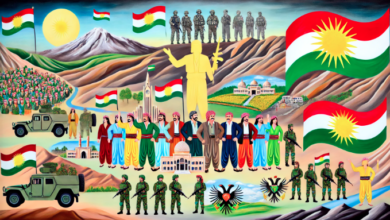Tensions in Northern Syria: Turkey’s Limitations, Russia’s Maneuvers, and the Kurds’ Difficult Choices
The current situation in Syria reflects a relative stalemate amid escalating tensions between the main actors, particularly regarding Turkey’s threats to launch a military operation against the Autonomous Administration areas in northeastern Syria. Turkey appears weak in its ability to carry out a large-scale offensive due to several factors. Domestically, the Turkish government is grappling with severe economic crises that constrain its capacity to finance costly military operations. Additionally, there is the risk of political backlash, as opposition forces could exploit any military failure against President Erdoğan, especially given the prevailing political polarization. Externally, Turkey finds itself encircled by international opposition to any major escalation. The United States, the primary ally of the Syrian Democratic Forces (SDF), continues to provide support to these forces, considering them a key partner in combating ISIS. Any large-scale Turkish action risks direct confrontation with Washington, a scenario Ankara seeks to avoid.
On the other hand, Russia, a key player in Syria, is pursuing a complex balancing act between its interests with Turkey and the Syrian regime. Moscow recognizes the importance of its relationship with Ankara within broader frameworks such as the Astana process. However, it also leverages Turkish threats as a pressure tool on the Kurds to push them toward negotiations with the Syrian regime. Russia aims to impose regime control over border areas as an alternative to direct Turkish intervention. The Kurds and the Syrian Democratic Forces face significant challenges in this context. Militarily, the SDF is under constant pressure from Turkish drone strikes and attempts at infiltration by Turkey-aligned factions. Nevertheless, the SDF maintains its cohesion, benefiting from U.S. support, though this support remains fraught with uncertainty due to the inconsistent nature of American policy in the region.
Politically, the Kurds are trying to balance their relationship with the U.S. while addressing Turkish threats. They also face the difficult option of negotiating with the Syrian regime, a path that seems increasingly inevitable given the gradual decline in international attention to their cause. For its part, the Syrian regime seeks to exploit these threats to expand its control, while Iran, another influential player, keeps a close watch to ensure that any agreements do not undermine its influence. Overall, the broader picture suggests that any major escalation will likely depend on larger international understandings, particularly between Russia and the U.S., as both aim to reshape Syria’s balance of power to serve their interests. Meanwhile, the Kurds are entering a critical phase that may determine the future of the Autonomous Administration amid growing military and political challenges.
